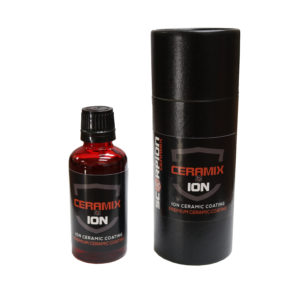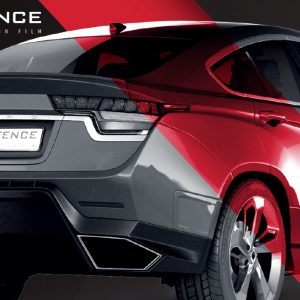Dual-Reflective Window Film
March 31, 20227 Reasons to Invest in Residential Window Film
April 11, 2022Paint Protection Film Vs. Ceramic Coating – Which is Better?
If you care about your car’s exterior and physical appearance, you probably are looking for products to protect and preserve your vehicle’s paint. Paint Protection Film (PPF) and ceramic coatings are some of the common products you might have come across when researching your options. While these products have some similarities, they have differences too. This article highlights the similarities and differences between these two products to help you select the best option.
Let’s get started!
What is Paint Protection Film – PPF?
Paint Protection Film was first developed during the Vietnam War and has since turned into a fantastic automotive paint protection solution. PPF is a transparent, urethane material applied to any exterior painted surface on your vehicle.
In the 90s, PPF was characterized by thick “bras” in the car front. Since they were pretty thick, it wasn’t easy to apply them to the car’s delicate and complex lines. Today’s Paint Protection Film is thin and extremely malleable, making it easier to stretch and conform to any painted surface of the vehicle, including the edges and curves.
PPF contains hydrophobic properties that help repel water and protect from acid rain, acid contaminants, rock chips, and bug splatter. It also has an elastomeric polymer, which protects against rock chips.

What is a Ceramic Coating?
Ceramic coating is a liquid polymer applied to your car’s exterior to form a permanent protective layer with the factory paint. It consists of ingredients such as Titanium Dioxide and Silica Dioxide, which protect your paint and other vehicle parts against external aggressions.
Ceramic coating is an excellent alternative for wax—it provides better chemical resistance, UV protection, scratch resistance, and enhanced heat tolerance.
A pro coating will provide lifetime benefits for your car when appropriately installed, saving you lots of money and time.
What are the Similarities Between PPF and Ceramic Coating?
Both ceramic and Paint Protection Film are better alternatives if you are looking for an enhanced paint protection solution for your daily drive. Although these are two different things, they have many similarities in their protection benefits. That said, here are the similarities between ceramic coating and PPF:
Protects Against Harsh Environmental Factors
Ultraviolet light or UV rays can cause massive damage to your car paint. Exposure to acid rain and other harsh contaminants will damage your coating over time. Luckily, both Paint Protection Film and ceramic coating can protect against these environmental factors.
Ceramic coating bonds with the car’s paint to create a strong, clear coat that protects against acid rain, UV rays, snow, ice, among other harsh environmental factors from damaging the paint surface.
On the other hand, a Paint Protection Film is a softer material but will protect your paint against the above factors.
Prevents Against Chemical Stains
If you have used wax, paint sealants, or polish, you know that it does not fully eliminate the possibility of tiny scratches or swirl marks. You will often see swirl marks after washing, waxing, or polishing your car in a circular motion (like we all do) using materials.
In that case, you will notice dirt and debris form into the clear coat. The thing is, scratches occur when you grind the debris onto the clear coat in a circular motion.
This will not happen if you apply either a ceramic coating or paint protection film. The result is a clean, fresh, and long-lasting film.
 Prevents Fading
Prevents Fading
You can expect your vehicle paint to fade if the clear coat is damaged. UV light, acids, and chemicals are commonly known to cause paint to fade.
A ceramic coating consists of SiO2 or Silica Dioxide (an inorganic metal oxide with a diameter of less than 100 nanometers). After application, this material hardens to form a crystal layer onto the surface.
The SiO2 percentage determines how strong the coating will be—the higher the percentage, the harder it will be and vice versa.
On the other hand, PPF consists of thermoplastic urethane, a durable material that can protect against harmful contaminants for up to 10 years.
Maintains Your Original Paint Look
The major benefit of applying a protection film on your vehicle is to keep the paint looking fresh and clean. Luckily, Nano-ceramic coating and paint protection film will help in this endeavor.
However, before installing a ceramic coating or PPF, ensure to polish the paint underneath and achieve a fantastic shine. As earlier stated, when a ceramic coating is applied, it hardens as glass to protect the underneath paint. Likewise, Paint Protection Film will protect against external stuff to keep your paint clean and fresh for years.
How is Ceramic Coating and Paint Protection Film Different?
Like many other people, you might be wondering what you will lose if you choose PPF over ceramic coating and vice versa. This is what we shall look at in this section.
Level of Protection
- UV Protection: A ceramic coating protects your car paint from fading due to UV light exposure. It acts like sunscreen that provides enhanced UV protection, making your vehicle look fresh and appealing. On the contrary, PPF might turn yellow or fade when exposed to excessive sunlight.
- Hydrophobicity: Ceramic coating is supreme when it comes to hydrophobicity. It repels things like water, liquids, mud, and other unwanted materials, making it easier to wash unwanted materials off your paint.
- Impact Resistance: Paint Protection Film is the ultimate king when it comes to impact resistance. PPF is thicker than ceramic coatings, making them offer better resistance against impact due to flying debris, including bugs, rocks, and leaves. Even better, some PPFs consist of elastomeric polymers that allow them to self-heal—return to their original shape after getting scratches, abrasion, or indentation.
Material Used
As earlier stated, a PPF consists of a polymer or vinyl material, while a ceramic coating is a liquid product. When installing the PPF, the installer lays the vinyl material over the car surface, smooths out all bubbles and imperfections, and uses a hot air machine to adhere it to the paint.
On the other hand, installers use an application sponge to a liquid formula on the paint surface, give it time to dry, and then buff it off when applying ceramic coatings.
Durability
You cannot ignore durability when comparing PPF vs. ceramic coatings. Depending on the material, a PPF can offer paint protection for up to 10 years (of course, it must be installed by qualified professionals and be well-maintained).
Ceramic coating can provide two to five years of protection, depending on its hardness. Again, the coating should be applied by professionals and need regular maintenance to achieve long-term benefits.
Appearance After Application
Both PPF and ceramic coatings will protect your car’s paint and maintain it to make it appear fresh. However, ceramic coatings are ahead when it comes to the gross factor. That means ceramic coating will offer more protection against dirt and other materials to add extra sleekness to your vehicle.
Removability
No matter how careful you are, you may end up scratching your film on your way from the garage. If you had a PPF installed, this is not a big deal as you will only need to replace the damaged panel. On the other hand, you will need a professional installer to remove a ceramic coating.
Effects on a Vehicle Wrap
A ceramic coating works the same on a vehicle wrap as it would on your car paint—it fills any imperfections (makes the wrap hydrophobic) and enhances its gloss.
It is not uncommon for car owners to have paint protection film installed on their vehicle wrap. After all, when your vehicle is scratched, it will reveal the paint underneath and won’t self-heal. Since PPF can self-heal, it will help lengthen the lifespan of your vehicle wrap.
Paint Protection Film Vs. Ceramic Coating – Which Should You Choose?
Now you know how ceramic coatings compare to PPFs. Choosing between paint protection film and ceramic coating comes down to your need and budget.
Paint Protection Film will come in handy if you want protection against external factors when driving on country roads. On the other hand, ceramic coatings will be ideal if you need to enhance the shine of your paint and reduce how often you wash your car.
That said, Paint Protection Film is more expensive than ceramic coatings. Besides, unlike ceramic coatings, PPFs must be installed by a professional, which means more costs.
Can You Have Both PPF and Ceramic Coating on Your Vehicle?
Yes, you can have both ceramic coating and PPF installed on your vehicle to get the best of both worlds. You can have the paint protection film installed on vulnerable parts of your car, including the bumper, mirrors, bonnet, and fenders, to protect against scratches from road debris. After that, have ceramic coating installed for extra sleekness and gloss.
Still Confused? We Can Help
If you are still unsure about what to choose between ceramic coatings and Paint Protection Film, get in touch with us today. At Scorpion, we’ll choose and install the best protection film for your car’s paint to ensure it is well-protected and looks impressive for many years.
